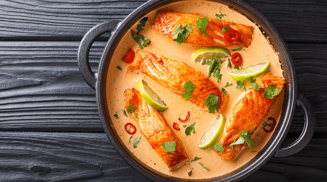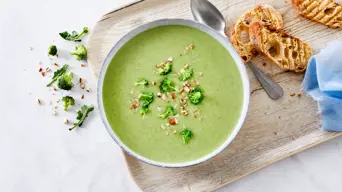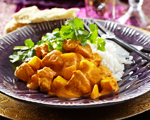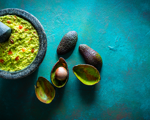
If you are looking to increase your daily protein intake or simply want to know which foods are high in protein, you have come to the right place. In this article, we give you a definition of high-protein and go through different food categories, including vegetables and meat, to see which options are protein-rich. We finish with a list of common high-protein foods to include in your cooking.
What foods are high in protein?
For a food to be considered high-protein, at least 20 % of the total energy value must come from protein. If a food contains protein equalling at least 12 % of the total energy value, it can be considered a source of protein.
Some prefer to divide high-protein foods into two main categories: animal-based proteins and plant-based proteins. Both categories contain a variety of foods that are considered high in protein. We have divided this article into themed sections, so read it all or jump to the headings that are relevant to you. You can also find information in our article about protein in common foods.
High-protein food list – what foods are high in protein?
Below, we have listed some common foods that are considered high-protein foods (meaning that at least 20 % of the total energy value comes from protein). We have included vegetables, meat, fish, and dairy. You can find more information about each food in the different articles mentioned in this article.
| Food | Protein content (per 100g) | % of the total energy value |
|---|---|---|
| Kale | 4.7 | 31.7 % |
| Brussels sprouts | 4.5 | 34.3 % |
| Broccoli | 3.6 | 41.4 % |
| Artichokes | 3.3 | 25.7 % |
| Goose, only flesh | 22.8 | 58.5 % |
| Pork loin, lean | 22.3 | 84.2 % |
| Beef topside | 22.3 | 76.4 % |
| Chicken breast | 21.5 | 58.6 % |
| Tuna | 26.8 | 91.9 % |
| Cod roe | 23.2 | 77.6 % |
| Salmon | 21.2 | 81.2 % |
| Haddock | 17.9 | 93.3 % |
| Egg | 12.3 | 36.7 % |
| Cheddar cheese | 25.8 | 26.5 % |
| Parmesan | 33.6 | 38.4 % |
| Skimmed milk | 3.5 | 40.5 % |
| Soy drink | 3.2 | 29 % |
| Skyr, 0.2 % | 11 | 63 % |
Note that the list is not exhaustive, so you can find many other high-protein foods to include in your everyday cooking. Remember to follow a varied and balanced diet and consult an expert if you want personal recommendations or advice on your specific needs.
High-protein meats and fish
Many types of meat are generally high in protein. Among those with the highest protein content are pork loin, containing 22.3 grams of protein per 100 grams, equalling 84.2 % of the total energy value, turkey, containing 21.3 grams of protein per 100 grams, equalling 81.6 % of the total energy value, and beef topside, containing 22.3 grams of protein, equalling 76.4 % of the total energy value.
Chicken is another popular choice and is also considered a high-protein food. Chicken breast contains 21.5 grams of protein per 100 grams, corresponding to 58.6 % of the total energy value.
As for the fish category, tuna is among the top scorers with a protein content of 26.8 grams per 100 grams, which means that protein constitutes 91.9 % of the total energy value. Salmon contains 21.2 grams of protein per 100 grams, making up 81.2 % of the total energy value.

Check our article high-protein meats and fish for more information and see our charts presenting the protein content in a selection of meats and fish.
Top 15 high-protein vegetables
You probably already know that it is recommended to include vegetables in your diet. If you want to know which ones to choose, if you are looking for protein, we have made a chart of high-protein vegetables.
At the top of the list, if we look at the content per 100 grams, are bean sprouts. They contain 10 grams of protein per 100 grams, equalling 29.9 % of the total energy value. Lentil sprouts are close with 9 grams of protein per 100 grams and 29.3 % of the total energy value.
If we look at the percentage, baby spinach is at the top, with protein contributing 64.4 % of the total energy value. It contains 2.5 grams of protein per 100 grams. Rocket follows with 63 % and 3.3 grams of protein per 100 grams. Take a look at the chart to find out more.
Protein in fruits
In general, fruit is not high in protein, but it can still be part of a varied and balanced diet. You can also still get some protein from fruits, although other foods offer higher amounts.
Also, it is worth noticing that dried fruits have a higher protein content than fresh fruits if you look at the grams per 100 grams. For example, fresh apricot contains 0.8 grams of protein per 100 grams, equalling 10.7 % of the total energy value, while dried apricot contains 3.5 grams of protein per 100 grams, equalling 5.7 % of the total energy value.
Read more about protein in fruits and the difference between fresh and dried ones.
Protein sources for vegetarians
A balanced diet is recommended to everyone, and if you follow a vegetarian diet, it is even more important to eat a wide range of foods to make sure that you get everything you need. Meat can be the common choice for many when they seek to get their daily protein, but obviously, this is not an option for vegetarians.
However, there are many delicious sources of protein for vegetarians as well, for example, different types of beans, lentils, and peas. Seeds, nuts, and grains are also popular options, and if you eat dairy products, there are numerous things to choose from, including cheeses and yoghurts.
Many vegetables are also high in protein, for example, broccoli, which contains 3.6 grams of protein per 100 grams, equalling 41.4 % of the total energy value, and spinach, containing 2.6 grams of protein per 100 grams, corresponding to 43.3 % of the total energy value.
Related Articles
Looking to boost your protein intake? Explore our comprehensive guides to protein-rich foods:













































